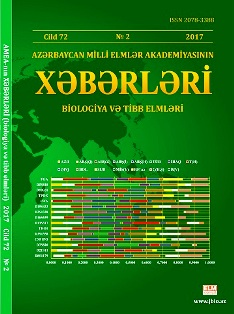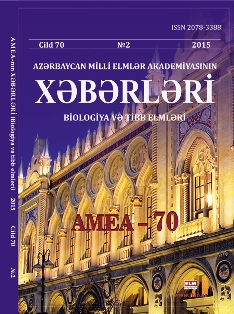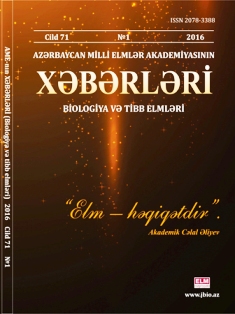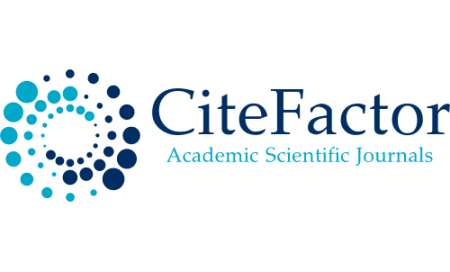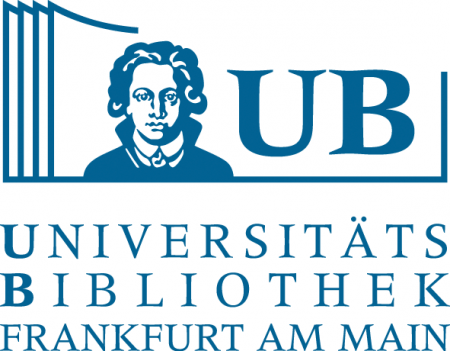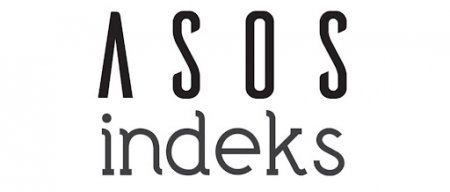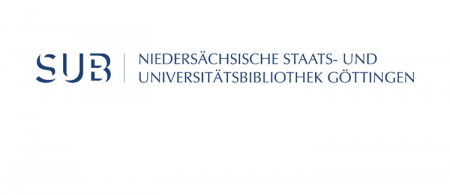
Study of the molecular mass of AZ-130 biomolecule and its stability at low pH
Research article: Study of the molecular mass of AZ-130 biomolecule and its stability at low pH
Authors: Aghayeva Aytan Gabil, Streatfield Stephen John, Huseynova Irada Mammad
1Institute of Molecular Biology & Biotechnologies, Azerbaijan National Academy of Sciences, 11 Izzat Nabiyev, Baku AZ1073, Azerbaijan;
2Department of Biotechnology, Fraunhofer USA Mid-Atlantic Center, Newark DE 19711, United States of America
*For correspondence: aytanaghayeva@gmail.com
Received: March 07, 2022; Reviewed: April 29, 2021; Accepted: May 26, 2022
Abstract: The aim of this work was to determine the approximate value of the molecular mass of an exogenous biomolecule synthesized by the Bacillus vallismortis AZ-130 strain isolated from oil-contaminated soils of Azerbaijan and to determine the degree of its stability at low pH values. To achieve the goals, strain AZ-130 was cultivated for 24 hours on a shaker with constant shaking (180 rpm) at 32°C. Next, a supernatant was obtained from the culture solution, which, after the addition of trifluoroacetic acid and 10-fold concentration using 3K MWCO Amicon Ultra-15 Centrifugal Filter Devices centrifugal filter concentrators, was examined by the growth inhibition assay for the presence of activity against S. aureus ATCC 29213. Based on the obtained results, it was found that the bioactive molecule produced by the AZ-130 strain is stable at low pH values and has a molecular mass of more than 3000 Daltons.
Keywords: Antimicrobial activity, antibiotics, bioactive molecules, natural products, stability, pathogenic bacteria
References
Agaeva A.G. (2019) Creation of a bacterial collection based on strains isolated from the soils of Azerbaijan and their screening for the presence of new antibacterial biomolecules. Journal of Life Sciences and Biomedicine, 1(74), no. 2: 13-19
Aghayeva A.G., Streatfield S. J., and Huseynova I. M. (2021) AZ-130 Strain from Oil-contaminated Soil of Azerbaijan: Isolation, Antibacterial screening, and optimization of cultivation conditions. Microbiology, 90(6): 754–762.
Atanasov A.G., Zotchev S.B., Dirsch V.M., The International Natural Product Sciences Taskforce & Claudiu T.S. (2021) Natural products in drug discovery: advances and opportunities. Nature Reviews Drug Discovery, 20: 200–216.
Balouiri M., Sadiki M., Ibnsouda S.K. (2016) Methods for in vitro evaluating antimicrobial activity: A review. J. Pharm. Anal., 6(2): 71-79.
Carrano L., Marinelli F. (2015) The relevance of chemical dereplication in microbial natural product screening. Journal of Applied Bioanalysis, 1(2): 55-67.
Cetinkaya Y., Falk P., Mayhall C.G. (2000). Vancomycin-resistant enterococci. Clin. Microbiol. Rev., 13(4): 686–707.
Challinor V. L. & Bode H. B. (2015) Bioactive natural products from novel microbial sources. Ann. NY Acad. Sci., 1354: 82–97.
Ekins S., Puhl A.C., Zorn K.M., Lane T.R., Russo D.P., Klein J.J, Hickey A.J., Clark A.M. (2019) Exploiting machine learning for end-to-end drug discovery and development. Nature Materials, 18: 435–441.
Fleming A. (1944). The discovery of penicillin. Br. Med. Bull., 2: 4–5.
Harvey A.L., Edrada-Ebel R., Quinn R.J. (2015) The re-emergence of natural products for drug discovery in the genomics era. Nat. Rev. Drug Discov., 14: 111–129.
Hockett K.L., Baltrus D.A. (2017) Use of the soft-agar overlay technique to screen for bacterially produced inhibitory compounds. J. Vis. Exp., 119: 55064.
Ling L.L., Schneider T., Peoples A.J., Spoering A.L., Engels I., Conlon B.P., Mueller A., Schäberle T.F., Hughes D.E., Epstein S., et al. (2015) A new antibiotic kills pathogen without detectable resistance. Nature, 517: 455-459.
Munita J.M., Arias C.A. (2016) Mechanisms of Antibiotic Resistance. Microbiol Spectr., 4(2); doi: 10.1128/microbiolspec.VMBF-0016-2015.
Nichols D. et al. (2010) Use of ichip for high-throughput in situ cultivation of ‘uncultivable’ microbial species. Appl. Environ. Microbiol., 76: 2445–2450.
Pham V.H.T., Kim J. (2012) Cultivation of unculturable soil bacteria. Trends Biotechnol., 30: 475–484.
Pidot S.J., Coyne S., Kloss F., Hertweck C. (2014) Antibiotics from neglected bacterial sources. Int. J. Med. Microbiol., 304: 14–22.
Prestinaci F., Pezzotti P., Pantosti A. (2015) Antimicrobial resistance: a global multifaceted phenomenon. Pathog. Glob. Health., 109(7): 309-318.
Rice L.B. (2008) Federal funding for the study of antimicrobial resistance in nosocomial pathogens: No ESKAPE. J. Infect. Dis., 197: 1079.
Schneider Y.K. (2021) Bacterial natural product drug discovery for new antibiotics: Strategies for tackling the problem of antibiotic resistance by efficient bioprospecting. Antibiotics, 10(7): 842.
Smith T. (2000) Antibiotics from soil bacteria. Nat Struct Biol., 7(3): 189-190.
van Duin D., Paterson D.L. (2016) Multidrug resistant bacteria in the community: Trends and lessons learned. Infect. Dis. Clin. North. Am., 30(2): 377–390, 420.
Ventola C.L. (2015) The antibiotic resistance crisis. Part 1: Causes and threats. Pharmacy and Therapeutics, 40(4): 277–283.
Wade W. (2002) Unculturable bacteria - the uncharacterized organisms that cause oral infections. J. R. Soc. Med., 95(2): 81–83.
Wright G.D. (2014) Something old, something new: revisiting natural products in antibiotic drug discovery. Can. J. Microbiol., 60: 147–154.
Wright G.D. (2018) Unlocking the potential of natural products in drug discovery. Microbial Biotechnology, 12: 55–57.
